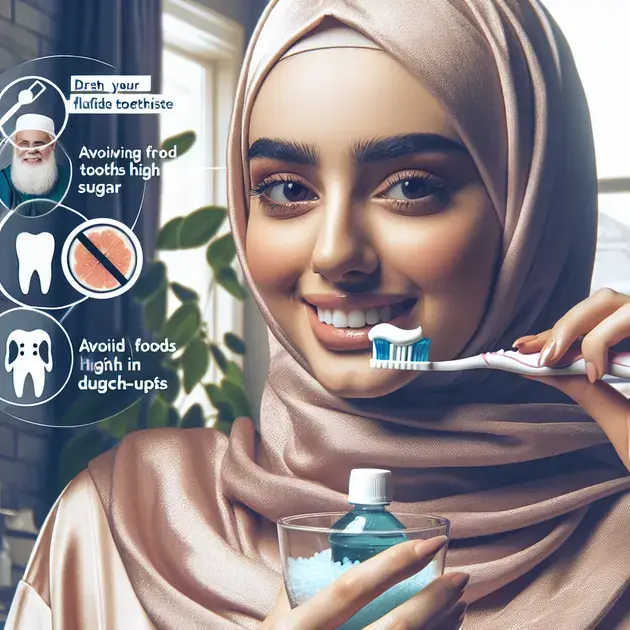Decaying teeth, also known as dental caries, are a common oral health issue affecting people of all ages. Understanding the causes, treatment, and prevention of decaying teeth is essential for maintaining good oral hygiene and overall health.
Recent studies have shown that poor oral hygiene, sugary foods and drinks, and bacteria in the mouth are major contributors to the development of decaying teeth. Fortunately, with proper dental care, including regular brushing and flossing, routine dental check-ups, and a balanced diet, decaying teeth can be effectively treated and prevented.

Causes of Decaying Teeth
Tooth decay is a common dental issue that can result from various factors. The main causes of decaying teeth include poor oral hygiene, consuming sugary and acidic foods and drinks, lack of fluoride in the water supply, and bacteria in the mouth. When plaque, a sticky film of bacteria, builds up on teeth, it can produce acids that attack the enamel, leading to cavities.
Some medications can also contribute to tooth decay by causing dry mouth, which reduces saliva flow and its protective effects on teeth. Additionally, frequent snacking or sipping on sugary beverages throughout the day can create an environment conducive to decay.
To prevent decaying teeth, it is essential to maintain good oral hygiene practices such as brushing teeth twice a day, flossing daily, and visiting the dentist regularly for check-ups and cleanings. Limiting the consumption of sugary and acidic foods can also help reduce the risk of decay.
Using fluoride toothpaste and mouthwash can strengthen the enamel and protect against acid attacks. Drinking fluoridated water and considering dental sealants for molars can provide additional protection against decay.
Apps like MyTeeth and MouthHealthy.org offer resources and information on how to prevent tooth decay through proper oral care habits and dietary choices.
Effective Treatment Options
When tooth decay is detected, prompt treatment is necessary to prevent further damage to the tooth structure. The most common treatment for decaying teeth is dental fillings, where the decayed portion of the tooth is removed and filled with a suitable material such as amalgam or composite resin.
In cases of severe decay or infection, a root canal procedure may be required to remove the infected pulp and preserve the tooth. Crowns can also be placed over the treated tooth to restore its shape and function.
If the decay has progressed to a point where the tooth cannot be saved, extraction may be necessary. Missing teeth can then be replaced with dental implants, bridges, or dentures to maintain oral health and function.
Antibiotics may be prescribed in cases of advanced decay or infection to eliminate bacteria and prevent further complications. Pain management techniques such as over-the-counter pain relievers or prescription medications can help alleviate discomfort during and after dental procedures.
Websites like WebMD and Healthline provide detailed information on various treatment options for decaying teeth, including when to seek professional dental care and what to expect during treatment.
Prevention Strategies
Preventing tooth decay involves adopting healthy habits and making informed choices to protect dental health. Regular dental visits for cleanings and check-ups are essential to detect and address any early signs of decay.
Brushing teeth with fluoride toothpaste at least twice a day and flossing daily helps remove plaque and food debris that can lead to decay. Using a mouthwash with fluoride can further strengthen enamel and reduce the risk of cavities.
Additionally, following a balanced diet low in sugar and acid-rich foods can help prevent tooth decay. Drinking water instead of sugary beverages and chewing sugar-free gum after meals can stimulate saliva production and neutralize acids in the mouth.
Dental professionals may recommend protective treatments such as dental sealants or fluoride varnish for at-risk individuals, such as children or those with a history of tooth decay. These treatments can provide an extra layer of defense against decay-causing factors.
Educational resources like the American Dental Association (ADA) website and the CDC Oral Health page offer tips and guidelines on how to maintain good oral health and prevent tooth decay through proper hygiene and dietary practices.

Causes of Tooth Decay
There are several factors that can contribute to tooth decay, also known as cavities. One of the main causes is poor oral hygiene habits, such as not brushing or flossing regularly. When plaque (a sticky film of bacteria) builds up on the teeth, it can erode the enamel over time, leading to decay. Additionally, consuming sugary and acidic foods and drinks can also increase the risk of tooth decay. These substances can feed the bacteria in the mouth, leading to the production of acids that attack the teeth.
Another common cause of tooth decay is dry mouth, which can be caused by certain medications or medical conditions. Saliva plays a key role in neutralizing acids and helping to remineralize the teeth, so a lack of saliva can make the teeth more vulnerable to decay. Furthermore, genetics can also play a role in tooth decay. Some people may inherit weaker enamel or a tendency to have more bacteria in their mouths, increasing their risk of developing cavities.
Inadequate fluoride exposure is another contributing factor to tooth decay. Fluoride helps to strengthen the enamel and make it more resistant to acids and bacteria. Without enough fluoride, the teeth are more susceptible to decay. Finally, poor diet and nutrition can impact oral health and contribute to tooth decay. A diet high in sugars and low in essential nutrients can weaken the teeth and make them more prone to decay.
To prevent tooth decay, it is important to maintain good oral hygiene habits, visit the dentist regularly, limit sugary and acidic foods and drinks, stay hydrated to prevent dry mouth, ensure adequate fluoride exposure, and maintain a healthy diet.
Treatment for Decaying Teeth
When tooth decay has already occurred, treatment is necessary to prevent further damage to the tooth and alleviate any pain or discomfort. The most common treatment for decaying teeth is dental fillings. During this procedure, the decayed portion of the tooth is removed, and the cavity is filled with a dental material such as amalgam or composite resin. Fillings help to restore the tooth’s shape and function while preventing the decay from progressing.
In cases where the decay has advanced and affected the inner pulp of the tooth, a root canal may be necessary. During a root canal procedure, the infected pulp is removed, and the tooth is cleaned and sealed to prevent reinfection. This treatment can save the tooth from extraction and restore its function.
In more severe cases of tooth decay where the tooth cannot be saved, extraction may be the only option. Extracting a decayed tooth is necessary to prevent the spread of infection to surrounding teeth and gum tissues. After extraction, options such as dental implants, bridges, or dentures may be considered to restore the appearance and function of the missing tooth.
Regardless of the treatment option chosen, it is essential to follow good oral hygiene practices, attend regular dental check-ups, and make necessary lifestyle changes to prevent future tooth decay and maintain oral health.
Preventing Tooth Decay
Preventing tooth decay is essential for maintaining good oral health and avoiding the need for extensive dental treatments. One of the most important preventive measures is to practice good oral hygiene habits, including brushing the teeth at least twice a day with fluoride toothpaste and flossing daily. This helps to remove plaque and prevent the buildup of bacteria that can cause decay.
Limiting the consumption of sugary and acidic foods and drinks is also crucial for preventing tooth decay. These substances can erode the enamel and create an environment conducive to cavity formation. Drinking water throughout the day can help rinse away food particles and reduce the acidity in the mouth.
Regular dental check-ups are another key aspect of preventing tooth decay. Dentists can detect early signs of decay and provide treatments such as professional cleanings, fluoride treatments, or dental sealants to protect the teeth. They can also offer personalized advice on oral hygiene practices and dietary choices to reduce the risk of decay.
Avoiding habits such as smoking and excessive alcohol consumption can also help prevent tooth decay. These habits can weaken the immune system and hinder saliva production, making the teeth more susceptible to decay. Maintaining a healthy lifestyle, including a balanced diet and regular exercise, can contribute to overall oral health and reduce the risk of tooth decay.
Conclusion
In conclusion, tooth decay, also known as cavities, can be caused by various factors such as poor oral hygiene habits, consumption of sugary and acidic foods, dry mouth, genetics, inadequate fluoride exposure, and poor diet. To prevent tooth decay, maintaining good oral hygiene practices, regular dental visits, controlling diet, staying hydrated, ensuring fluoride exposure, and living a healthy lifestyle are crucial.
When tooth decay occurs, treatment options include dental fillings to restore the tooth’s function, root canal procedures for advanced decay, and extraction when necessary. Regardless of the treatment, following good oral hygiene, scheduling regular dental check-ups, and making lifestyle changes are essential for preventing future decay and maintaining oral health.
Preventing tooth decay involves practicing good oral hygiene habits, limiting sugary and acidic foods, staying hydrated, attending dental check-ups, avoiding harmful habits like smoking and excessive alcohol consumption, and maintaining a healthy lifestyle overall. By following these preventive measures, individuals can reduce the risk of tooth decay and avoid the need for extensive dental treatments in the future.